7-Day VR Cam Girl Creator Bootcamp: Master Virtual Reality Content
Bootcamp Overview and Structure
Alright, let's dive into the 7-Day VR Cam Girl Creator Bootcamp. It's a hands-on, slightly wild ride through creative practice and technical training for anyone curious about stepping up their VR camming game. From basic setup to some pretty advanced production tricks and editing inside immersive XR spaces, the bootcamp keeps things moving. There's a real focus on measurable progress, not just theory, plus direct mentorship from creators who've been around the VR block.
Daily Schedule and Milestones
This isn't a marathon, it's seven days, back-to-back. Each day zeroes in on a different stage of the VR Cam Girl Creator journey, so you get to actually try out new skills right away.
Mornings are all about demos and instruction, but afternoons? That's when you get your hands dirty making stuff.
There's daily progress tracking, so you don't get lost. By the end, you'll have a finished VR scene or a short interactive clip, ready for the world, or at least for a test audience.
Key Learning Objectives
The real aim? Giving you practical skills to produce and manage VR-based content as a VR Cam Girl Creator (or whatever title fits you best).
We dig into technical chops, creative direction, and, maybe most important, how to actually connect with your audience in a virtual space. Operate VR cameras and XR tools without frying your brain (or your hardware).
Design scenes that make viewers feel like they're right there with you. Edit and color-grade with software you can actually afford. Handle sound, lighting, and camera framing for a virtual show that looks pro.
Ethical and privacy stuff comes up too, because nobody wants surprises down the line.
Mentorship and Support
Mentors are a big part of this. Each has a specialty, maybe filmmaking, maybe XR production, maybe digital marketing (because, like it or not, branding matters).
You'll get daily feedback on your setup, creative choices, and even how you present on cam. Group chats are where a lot of the troubleshooting magic happens.
After the bootcamp wraps, support doesn't just vanish. There's ongoing access to recorded sessions, shared resources, and a peer group for those "wait, how did I do that?" moments.
Essential VR Cam Girl Creator Tools and Setup
Getting the right mix of software, gear, and digital assets is key to smooth, immersive VR Cam Girl Creator content. If you skimp on setup, you'll probably regret it later, trust me.
Start strong, and you'll dodge performance headaches, wasted time, and weird technical glitches that always seem to pop up at the worst moment.
Unity Installation and Configuration for VR Cam Girl Creator Content
Unity's the go-to engine here. It's got robust VR support and works with basically all the big headsets.
Always grab the latest LTS (Long-Term Support) version for fewer bugs. Once it's on your system, add the XR Plugin Management package so you can actually connect your Meta Quest or Vive. Don't forget to tweak player settings, resolution, frame rate (shoot for 90–120 FPS), and the render pipeline. Universal Render Pipeline (URP) gives you more control over lighting and performance, which you'll want.
VR Cam Girl Creator Hardware Requirements
You need solid hardware for crisp visuals and smooth tracking. Most folks use a Meta Quest 3, HTC Vive Pro, or Valve Index for testing and streaming their VR Cam Girl Creator scenes. On the PC side, aim for an NVIDIA RTX 3060 or better and at least 16 GB RAM. Fast SSD storage is a lifesaver for load times and live previews.
If you're streaming or recording, a high-def webcam, adjustable LED lights, and a good USB condenser mic make a huge difference. Wired internet is a must, nobody wants lag during a live show. Keep your workspace tidy and private to avoid tracking issues and, honestly, just to keep your sanity during long shoots.
Asset Management for VR Cam Girl Creator Projects
Efficient asset management saves you from chaos. In Unity, sort assets by type, models, textures, audio, scripts, so you can actually find stuff when you need it.
Version control (Git or Unity Plastic SCM) is your backup plan. It keeps your work safe and makes collaborating with other creators way less stressful.
Always check scale, materials, and poly count when importing assets. Compress big textures and use prefabs for anything you repeat a lot. That keeps your scenes running smooth. Unity Asset Store and Sketchfab are goldmines for ready-to-use models and animations, but always check the license before you hit download.
C# Scripting for VR Cam Girl Creator Interactions
C# is what makes your VR Cam Girl Creator world tick. It's how you control movement, interaction, and all the little details that make a virtual scene feel alive.
C# Basics for VR Cam Girl Creator Projects
Unity runs on C#. It's object-oriented but not as intimidating as it sounds. You'll work with variables, methods, and classes, think of them as the building blocks for every cool thing you want to do in VR. Most scripts have three main parts: Start() (runs once at launch), Update() (checks every frame), and OnTriggerEnter() (detects when stuff collides or interacts).
Implementing Movement and Controls in VR Cam Girl Creator Content
Movement in VR Cam Girl Creator scenes depends on how you handle input from controllers or headsets. The Input System in Unity lets you map joystick or touchpad input to movement. Scripts like Transform.Translate() or CharacterController.Move() do the heavy lifting. Add checks to prevent walking through walls or zipping around too fast. Rotation and head tracking are all about headset sensors. For comfort, you can use snap turning or smooth locomotion, people have strong opinions on which feels better. Gravity and collision detection keep things grounded. Always test on different VR platforms if you can, quirks pop up everywhere.
Scripted Interactions for VR Cam Girl Creator Experiences
Interactions are what make VR Cam Girl Creator content truly engaging. You'll write scripts so users can grab, press, or point at objects, sometimes all at once. Attach scripts like OnTriggerStay() to props so they react when users interact. Raycasting lets you select distant objects with a virtual laser pointer. Manage object states (active, inactive, highlighted) to give feedback. Sound and haptic responses add that extra layer of realism. Keep scripts efficient, don't bog down performance by checking for interactions every millisecond. Reusable components help keep your project tidy.
VR Cam Girl Creator Content Creation Techniques
Making a virtual scene feel real is part science, part art. It’s about where you put your cameras, how you light your avatar, and what kind of soundscape you build to draw viewers in. In the end, it's about connection. The best VR Cam Girl Creator content makes viewers forget they're not really there. How do you pull that off? Trial, error, and a little bit of flair.
Camera Angles and Immersion for VR Cam Girl Creator
When it comes to creating immersive VR content, camera placement is everything. For a VR Cam Girl Creator, the camera basically becomes your viewer’s eyes, so even a tiny nudge can totally shift the vibe. We’re always tinkering with first-person and third-person views. First-person is all about making someone feel like they’re right there, while third-person gives a better sense of body language or the space you’re in. If you want to avoid motion sickness (and who doesn’t?), smooth, steady camera moves are the way to go. Static shots or slow pans usually win out over any dizzying spins. Whenever we shoot interactive scenes, we try to sync the virtual camera with natural head movement. That way, everything feels more intuitive and comfortable. Field of view matters too. We stick to something close to human vision, usually 90°–110°, because anything too wide or narrow just looks off.
Lighting and Scene Composition in VR Cam Girl Creator Projects
Lighting’s a game changer, it sets the mood and draws the eye where you want it. We mix ambient, directional, and point lights to create depth, but never go overboard.
Avatar Customization and Animation for VR Cam Girl Creator Experiences
Avatars are the stand-ins for real people, so they’ve got to feel authentic. We spend a lot of time tweaking body proportions, facial expressions, and making movement look smooth, because let’s be honest, uncanny valley is real. Motion capture or inverse kinematics (IK) keeps gestures and posture believable. If we can’t do full tracking, we’ll improvise with simplified rigs or procedural animation to fill the gaps. Facial animation is huge. Even a little eye dart or a smirk goes a long way. We always test animations under different lighting and camera angles to make sure nothing looks weird from any perspective.
Sound Design for VR Cam Girl Creator Virtual Environments
Audio is the unsung hero of immersion. We design spatial sound so that footsteps, voices, and background noises come from the right direction, otherwise, something just feels off. We layer ambient noise, dialogue, and effects. For example:
- Ambient: room tone, background hums
- Interactive: footsteps, object handling
- Emotional cues: music or voice tone
Mixing is a balancing act. Too much of one thing and you lose the rest. We tweak reverb and distance effects so everything matches the virtual space’s size, which makes the whole world feel more believable.
Optimization and Performance Best Practices for VR Cam Girl Creator Content
Let’s be real, nobody wants a laggy VR session. Our main goal is to keep visuals smooth, reduce latency, and make sure everything just works, no matter what device someone’s using. Stable video quality and low latency are non-negotiable. Even a split-second delay can ruin the mood.
Reducing Latency and Lag for VR Cam Girl Creator Streams
We aim for motion-to-photon latency under 20 milliseconds. That’s the magic number for comfort, based on recent VR industry stats. Hardware encoding (H.264 or H.265) and features like asynchronous timewarp or motion smoothing help keep things steady. A wired network or solid 5 GHz Wi-Fi is a must, random disconnects are a nightmare.
-
Here’s a quick checklist:
- *Keep frame rate above 60 fps for smooth visuals.
- *Cut down CPU/GPU loads with efficient rendering.
- *Let the system adjust resolution on the fly if bandwidth dips.
Optimizing Assets for Smooth Playback in VR Cam Girl Creator Sessions
High-res assets look great, but they can grind hardware to a halt. We compress textures and 3D models to keep things running fast, nobody’s counting pixels up close anyway. Normal maps are our friends. They give depth without piling on polygons. And we’re picky about shaders and post-processing, too much, and performance tanks. Audio is usually Ogg Vorbis or AAC for the best balance of quality and size. Preloading key files helps dodge any awkward mid-session loading hiccups.
Testing Across Devices for VR Cam Girl Creator Content
Testing is a grind, but it’s the only way to make sure things work everywhere, from PC VR to mobile and standalone headsets like Meta Quest. We track frame rate, heat, and battery life during long runs. If something overheats or lags, we dial back resolution or tweak texture sizes. Network conditions vary, so we test on everything: wired, Wi-Fi, even spotty mobile. Tools like Unity Profiler or Oculus Performance HUD help us catch performance issues before viewers do.
Branding and Monetization Strategies for VR Cam Girl Creator Success
Building a real brand is more than a logo, it’s about being memorable and trustworthy. That’s how a VR Cam Girl Creator stands out and actually makes money in a crowded space. We create a clear visual identity and stick to it. Consistency across platforms, same username, colors, and logo, makes it easier for fans to find and remember us. Here’s a solid guide for anyone starting out.
It’s helpful to map out our brand values: We keep it professional but real. Sharing behind-the-scenes moments or creative struggles gives followers a sense of the person behind the avatar, without oversharing.
Monetizing VR Cam Girl Creator Content
There are more ways to earn than you might think. Subscriptions, private sessions, brand partnerships, and digital merch are all on the table. Exclusive VR experiences or early access can make subscriptions feel worth it. Partnering with brands, especially those in VR hardware or adult tech, can add stability, as long as their vibe matches ours. User-generated content licensing is another angle: brands pay to use our VR clips in their own marketing, which means recurring income with less extra work. We track our revenue streams to see what actually pays off, usually with a simple spreadsheet or dashboard. It’s about working smarter, not harder.
Community Engagement and VR Cam Girl Creator Growth
Let’s be honest, our viewers are the heart of everything. Whether you’re a VR Cam Girl Creator, streamer, or just someone who loves digital spaces, responding to comments and hosting Q&A sessions makes a huge difference. Creating polls or interactive meetups in virtual reality? That’s where things get interesting. These real-time connections can turn casual viewers into loyal fans. We’re not obsessed with follower counts; it’s all about genuine interactions. Encouraging respectful conversations and setting clear community rules helps keep things safe and welcoming.
Want to keep your crowd close? Try sending out weekly updates or the occasional newsletter. One study found that creators who communicate regularly see engagement rates rise by up to 35%, not bad, right? If you treat your audience like collaborators instead of faceless customers, loyalty tends to follow. Virtual reality communities have shown that active engagement leads to longer viewer retention. It’s not just about content; it’s about building a space where people want to return.


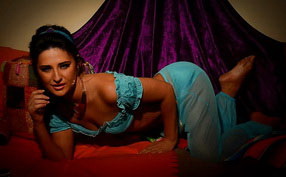



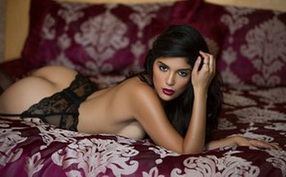




















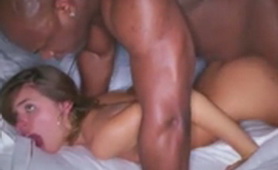

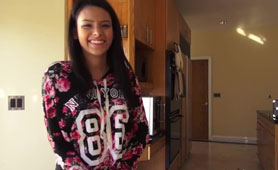
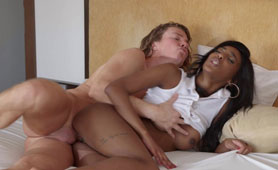
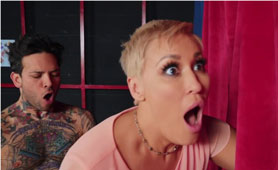


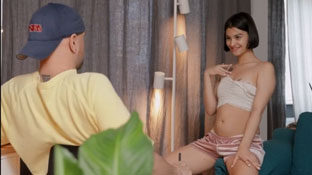


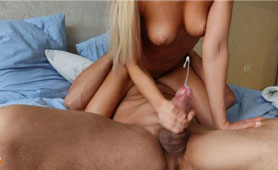
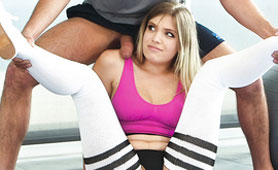
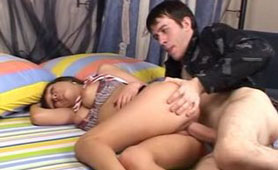
You must be logged in to post wall comments. Please Login or Signup (free).